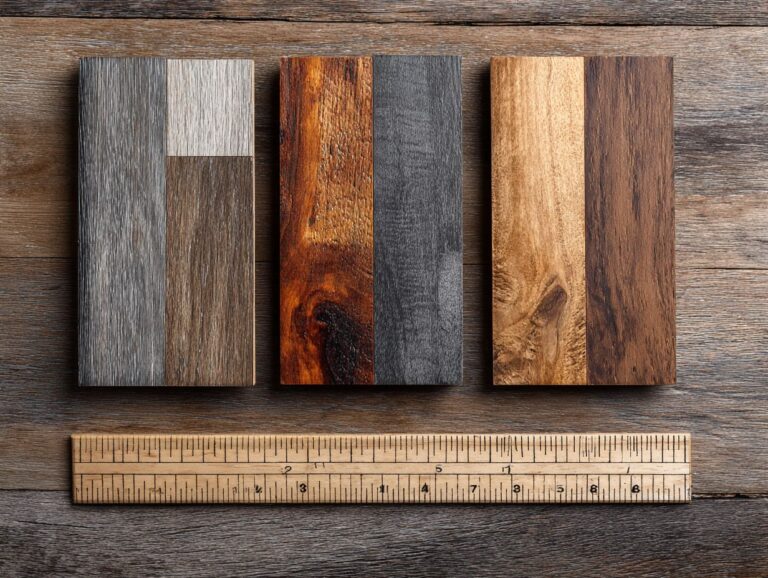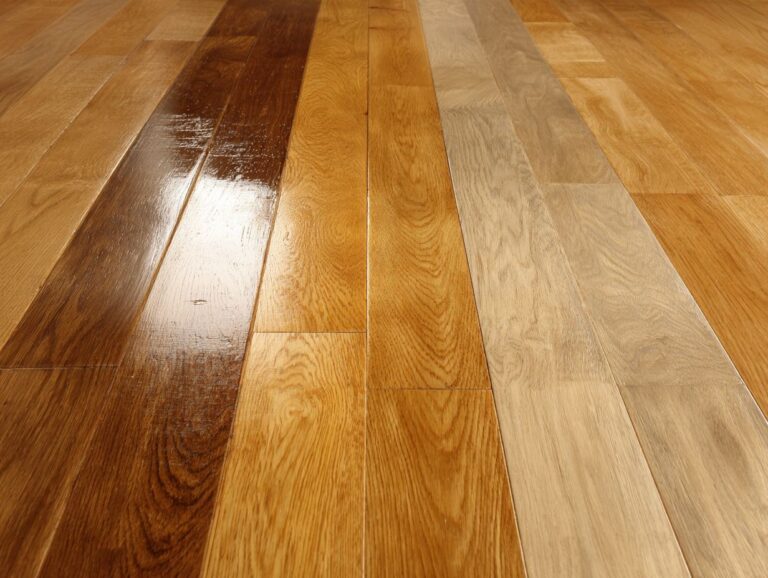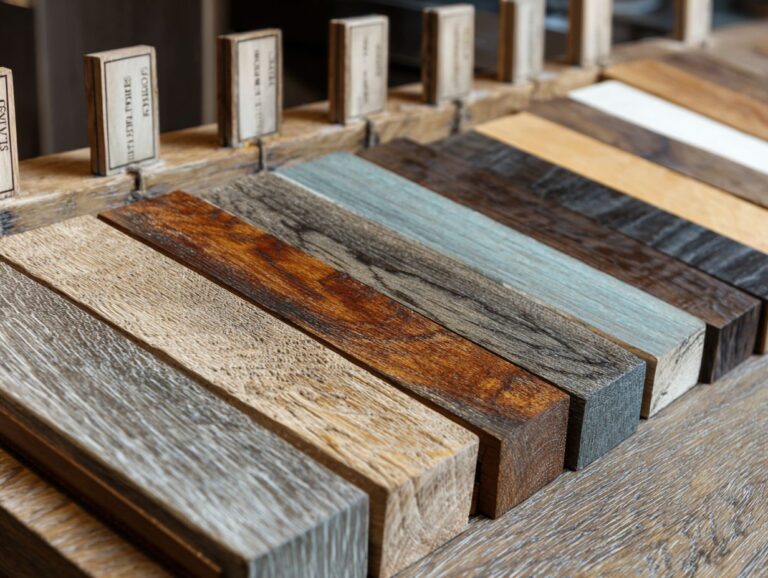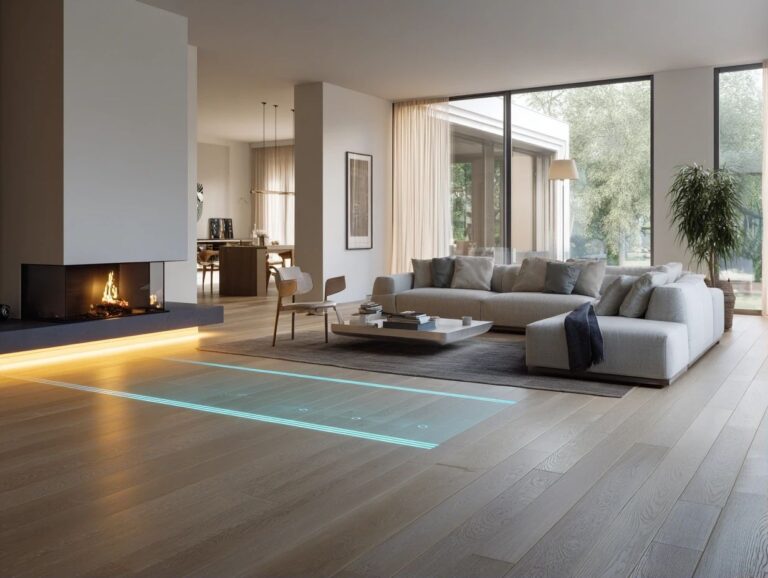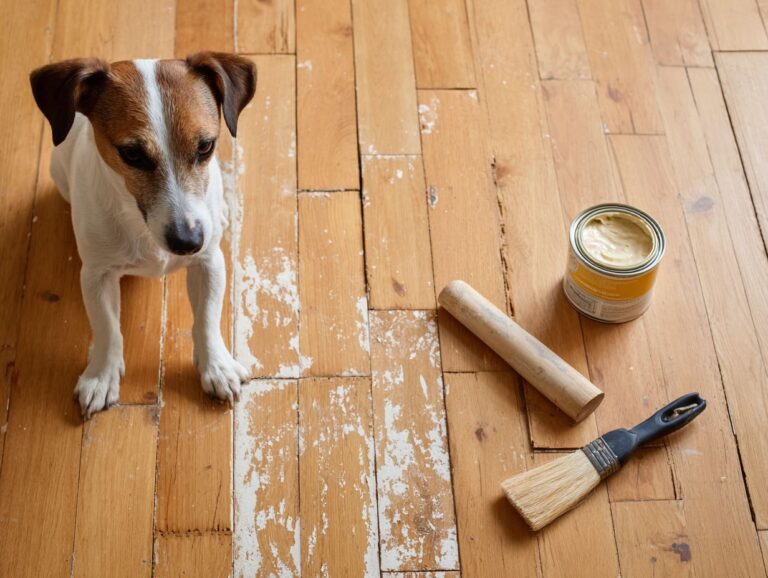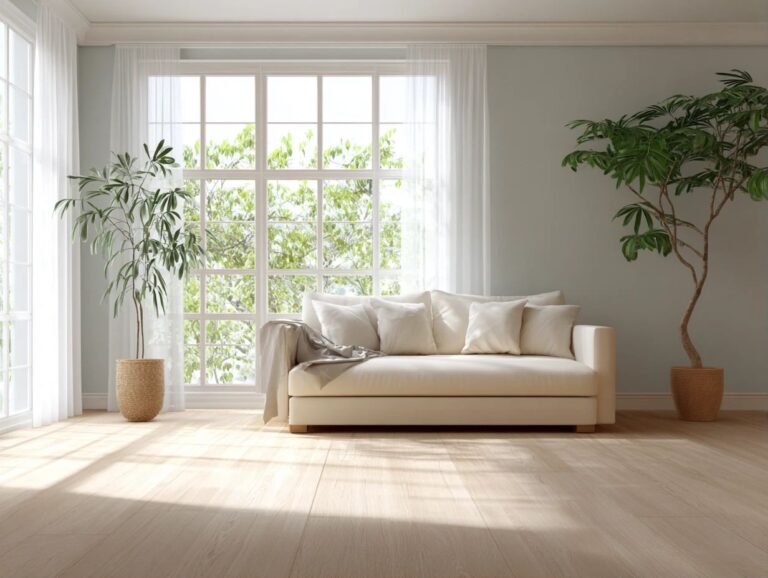Vinyl Floor Maintenance – Keeping LVP Looking New
Contents
- Introduction to Vinyl Floor Maintenance
- Vinyl Flooring Industry Analysis
- Daily Maintenance Tips
- Weekly Cleaning Routine
- Monthly Maintenance Practices
- Preventing Damage to LVP
- Dealing with Stains and Spills
- Restoring LVP Appearance
- Long-Term Care for Vinyl Floors
- Frequently Asked Questions
- 1. How often should I clean my vinyl floors to keep them looking new?
- 2. Can I use a steam mop to clean my vinyl floors?
- 3. How do I prevent scratches on my vinyl floors?
- 4. Can I use bleach or harsh chemicals to clean my vinyl floors?
- 5. How do I remove stains from my vinyl floors?
- 6. Is it necessary to wax my vinyl floors?
Introduction to Vinyl Floor Maintenance
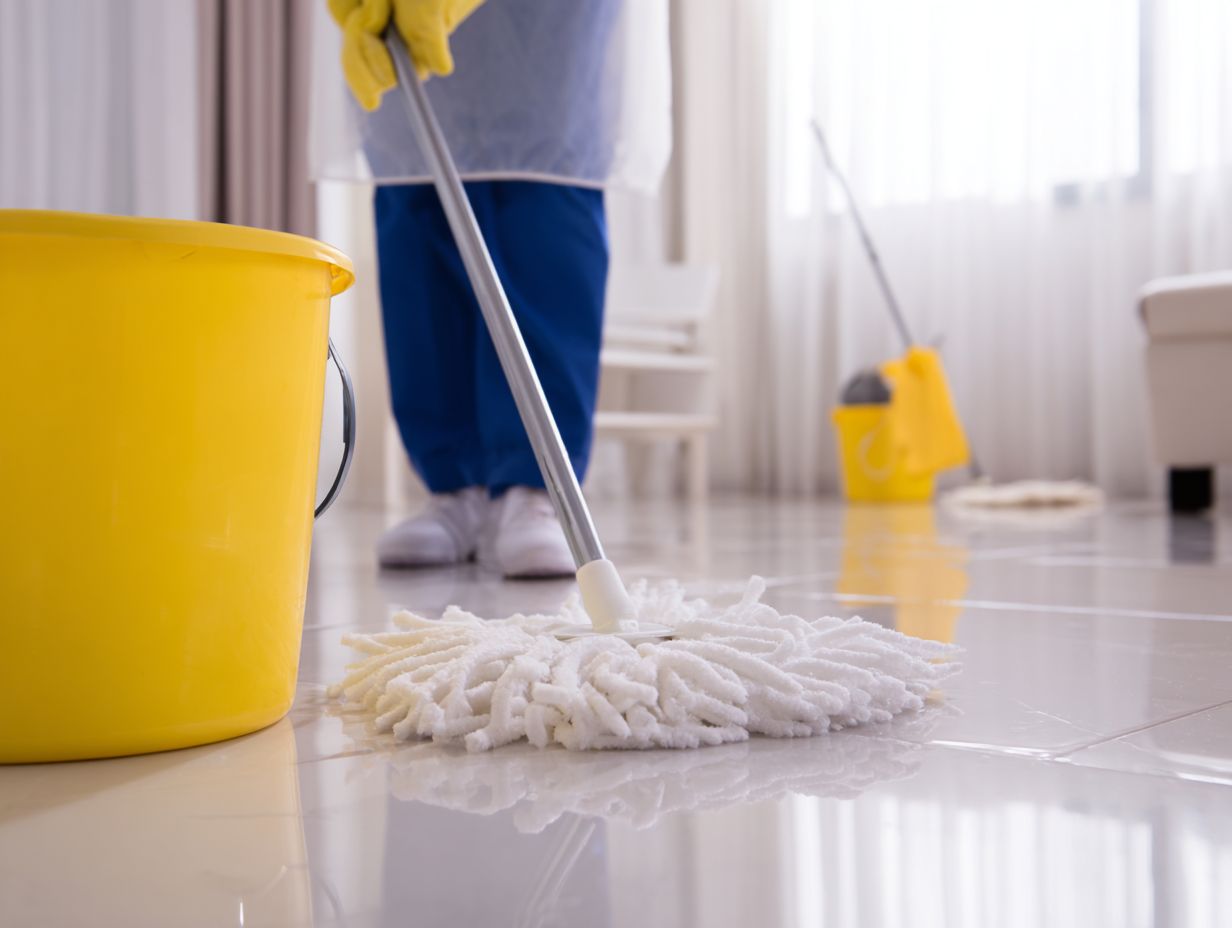
Key Takeaways:
Understanding Luxury Vinyl Plank (LVP)
Luxury Vinyl Plank (LVP) is a popular choice for homeowners due to its water-resistant properties and realistic wood-like appearance.
LVP is very strong, suitable for places where lots of people walk.
You can choose from various styles, including wide planks that mimic traditional hardwood or narrow tiles for a modern touch.
Manufacturers like Mannington provide options with added texture and depth, while Carolina Pro Flooring offers a range of colors and finishes to suit any decor.
Whether you want a classic oak appearance or a modern look, LVP provides both style and practicality, offering comfort to walk on and long-lasting durability.
Vinyl Flooring Industry Analysis
Vinyl Flooring Industry Analysis
Exploring modern flooring options like vinyl can significantly impact both style and functionality in your space. It’s essential to understand the nuances that come with vinyl flooring, such as handling plank separation and ensuring a seamless finish. For an extensive analysis of these challenges, our comprehensive guide on vinyl plank separation causes and remedies offers valuable insights.
Vinyl Flooring Statistics: Market Growth and Penetration
Vinyl Flooring Statistics: Sales and Market Size
Vinyl Flooring Statistics: Product Specifics
The Vinyl Flooring Industry Analysis gives a detailed look at the market trends and financial details of the vinyl flooring sector. This data shows the strong growth path and market reach of vinyl flooring, especially in the U.S., and includes product details important for people involved in the industry.
Vinyl Flooring Statistics reveal significant trends in market growth and consumer uptake. The global market for vinyl flooring is on a solid growth path, with a compound annual growth rate (CAGR) of 7.4% from 2019 to 2025. This growth reflects increased consumer preference for durable, aesthetic, and cost-effective flooring solutions. In the U.S., the vinyl flooring penetration rate reached 17.4% in 2019, indicating a considerable segment of the flooring market opting for vinyl solutions. A noteworthy 28.15% growth rate in vinyl flooring imports from 2013 to 2018 suggests strong demand and reliance on international suppliers to meet domestic needs.
Sales and Market Size Data highlights the financial growth of the vinyl flooring industry. U.S. luxury vinyl tile (LVT) flooring sales soared from $718 million in 2012 to over $4.8 billion in 2019, showcasing the product’s increasing popularity and acceptance. When positioned within the broader context of the $27.6 billion U.S. floor coverings market in 2019 LVT sales make up an important part of the market, showing it is a major factor in market trends.
Product Specifics add depth to the analysis, revealing pricing strategies and profitability. The average price increase for stone plastic composite (SPC) products in 2019 was 47.6% This indicates rising prices or increased market value of these products. LVT products maintain a healthy average gross margin of 40%, reflecting profitability and market strength. Additionally, the $50 per sq.ft. price difference between wood plastic composite (WPC) and SPC flooring highlights the cost considerations that customers must evaluate when choosing between these two popular vinyl flooring options.
Overall, the Vinyl Flooring Industry Analysis shows a lively and growing market with good growth potential, fueled by consumer demand for flexible and affordable flooring options. As the market evolves, stakeholders must consider trends in import reliance, product pricing, and market segment penetration to effectively capitalize on opportunities within the vinyl flooring industry.
Importance of Maintenance
Regular maintenance of luxury vinyl flooring can extend its lifespan by up to 10 years.
To maintain your luxury vinyl floors, start with regular sweeping or vacuuming to remove dirt and debris, preventing scuff marks.
Experts recommend using a wet mop and a mild cleaner every few weeks for a deeper clean.
For scuff marks, a simple rubber eraser can often do the trick without damage. Placing mats at entryways can reduce wear from tracked-in dirt.
According to the National Floor Safety Institute, maintaining floors properly can keep them looking new and reduce the likelihood of scratches by up to 75%.
Daily Maintenance Tips
Following a daily care routine can greatly improve how long luxury vinyl floors last and how they look.
Regular Sweeping and Dusting
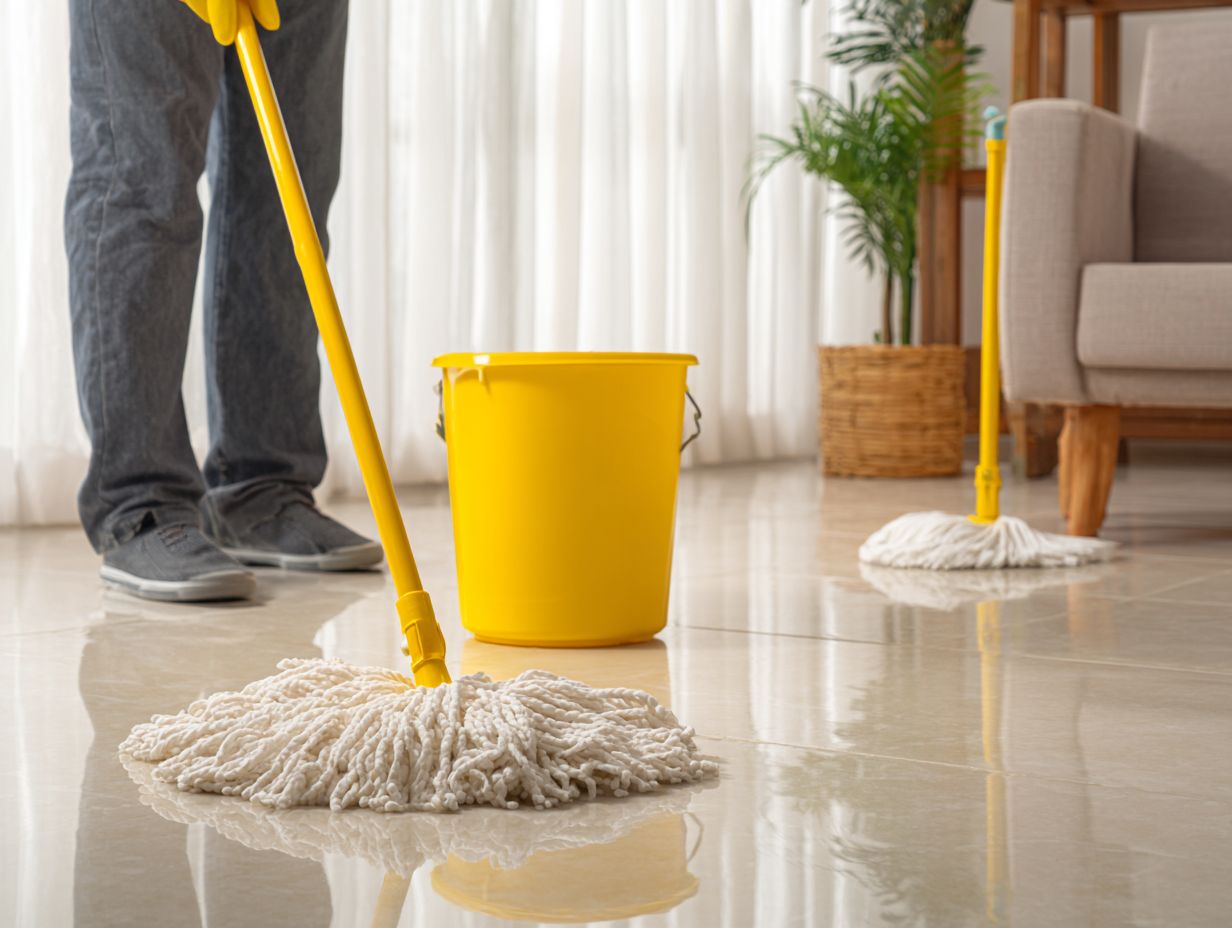
Start your daily routine with regular sweeping or dust mopping using a microfiber mop, which can trap dirt and debris effectively.
To maximize your cleaning efficiency, consider using the O-Cedar EasyWring Spin Mop system, which allows you to wring out excess water with minimal effort.
Sweep or dust mop daily in high-traffic areas like entryways and kitchens, while less frequented spaces can be done weekly.
For better dust removal, choose a microfiber cloth or an electrostatic duster for a thorough clean.
Vacuum every two weeks with a HEPA filter to collect allergens and large particles, especially if you have pets.
Using the Right Cleaning Tools
Selecting the right cleaning tools is essential for maintaining luxury vinyl flooring without causing damage.
To keep your floors looking new, try a microfiber mop ($15-$30) for cleaning dust and dirt. Its gentle fibers won’t harm the surface.
Pair this with non-abrasive scrubbers ($10-$20) for deeper cleaning tasks; look for ones made from nylon or foam. A gentle pH-neutral cleaner, available at retailers like Amazon or Home Depot, will also help maintain the flooring without harming its finish.
Avoid harsh chemicals and heavy furniture cleaners that can lead to dullness or scratches.
Weekly Cleaning Routine
Regular cleaning each week, including mopping and using the proper cleaning products, will help your luxury vinyl floors stay spotless.
Choosing the Right Cleaner
Choosing a pH-neutral cleaner, like Bona Hard-Surface Floor Cleaner, is important for keeping the finish of your luxury vinyl floors in good condition.
Consider using Method All-Purpose Cleaner, which is biodegradable and effective without harsh chemicals. For stubborn stains, a vinegar and water solution can be safely applied; just mix one cup of white vinegar with a gallon of water.
Avoid cleaners with bleach or ammonia, as these can damage the vinyl surface. Regularly using a microfiber mop also helps prevent scratches and keeps the floor looking pristine.
Always try the cleaner on a small spot first to check if it works well with your floor’s finish.
Proper Mopping Techniques
When mopping, use a slightly wet mop instead of a drenched one to avoid harming LVP.
To achieve the best results, start with warm water mixed with a gentle cleaning solution, like a few drops of dish soap or a pH-neutral cleaner specifically designed for LVP.
Dip the mop lightly into the solution, allowing it to soak up just enough moisture without dripping. Mop in a figure-eight pattern to cover the surface evenly and to lift dirt effectively.
Try to clean the floor with a mop 1-2 times each week, and do not use steam mops because the heat can cause damage to the LVP.
Monthly Maintenance Practices
Regular monthly care is essential to fix wear and tear and keep your luxury vinyl floors in great shape.
Inspecting for Damage
Dedicate time each month to inspect your luxury vinyl flooring for signs of damage such as scratches, dents, or discoloration.
During your inspection, look for the following common issues:
- Surface scratches, which can be lightly buffed out with a non-abrasive cleaner;
- Dents, which may require heat from a hairdryer to gently reshape;
- Discoloration, often softened with a vinegar-water solution.
To avoid more scratches, use furniture sliders beneath large pieces to stop damage. Have a maintenance kit on hand with a soft-bristle brush, a pH-neutral cleaner, and microfiber cloths to keep your flooring in good condition for a long time.
Deep Cleaning Procedures
Deep cleaning luxury vinyl floors monthly can help remove embedded dirt and restore their shine.
Start by sweeping or vacuuming to remove loose dirt, then use a specialized vinyl floor cleaner mixed with warm water.
Scrub lightly with a non-abrasive pad to avoid scratching the surface. After scrubbing, rinse the area thoroughly with clean water to remove any residue.
For optimal dirt removal between deep cleanings, consider investing in a robotic vacuum specifically designed for hard floors, such as the iRobot Braava, which can save time and maintain cleanliness effortlessly.
Preventing Damage to LVP
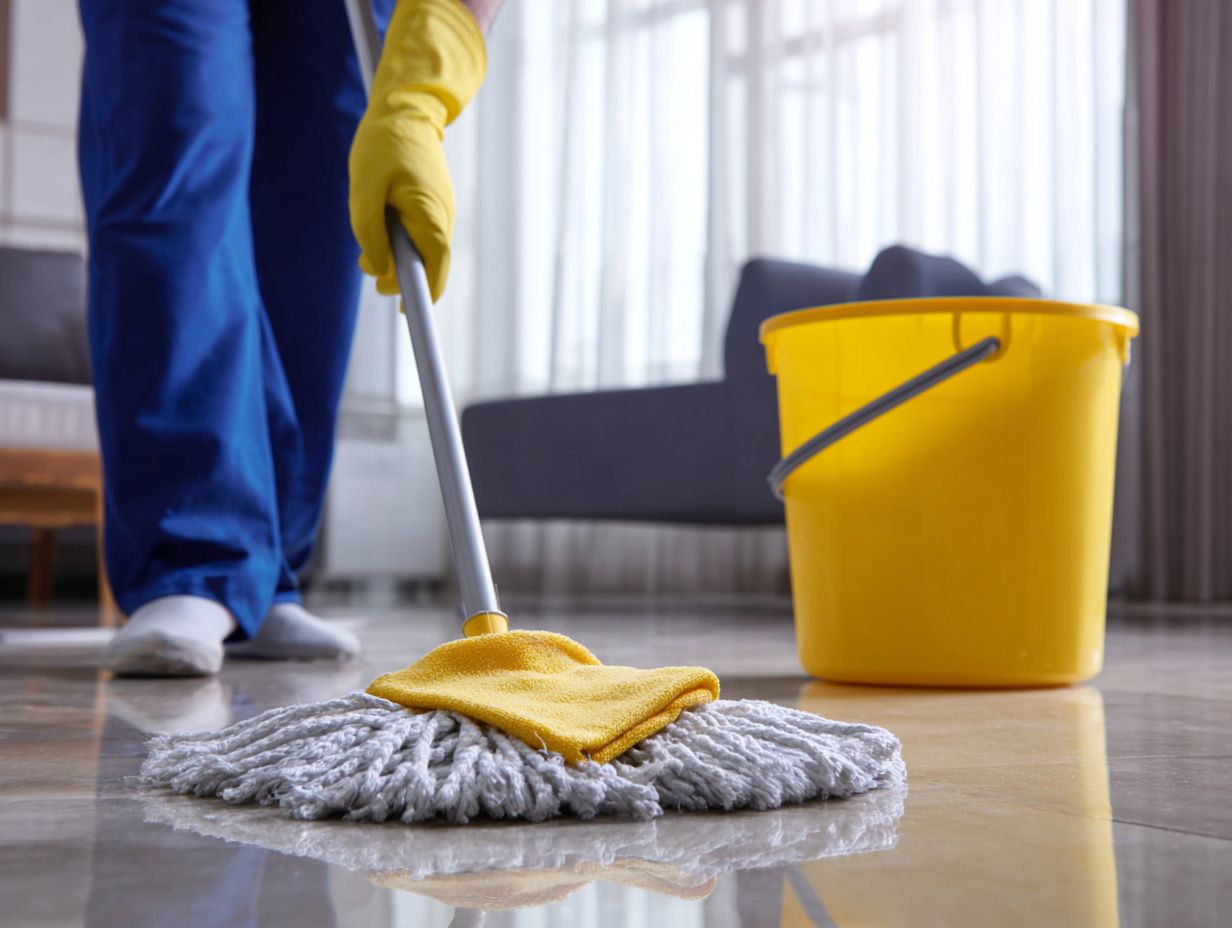
Preparing in advance to protect your luxury vinyl flooring can significantly reduce the risk of damage and extend its lifespan. For example, understanding potential causes and remedies for vinyl plank separation can help you maintain your flooring’s integrity.
Protective Measures for High-Traffic Areas
Using entrance mats and rubber floor protectors can help shield your luxury vinyl flooring from dirt and moisture brought in from outside.
Choosing good entrance mats is important for proper protection. For example, Mohawk’s commercial-grade mats are designed to trap debris and absorb moisture, preventing both grime and water from damaging your floors.
Consider a rubber floor protector, such as those from RUGZ, which can withstand heavy foot traffic while preventing scratches and scuffs.
Regularly cleaning these mats and protectors will keep them working well and help them last longer, which will keep your luxury vinyl flooring looking good.
Using Furniture Pads
Attaching furniture pads to the legs of heavy furniture can prevent scratches and scuff marks on your luxury vinyl flooring.
To keep your furniture safe, try using sturdy felt pads like the X-PROTECTOR Felt Furniture Pads (around $10 for a pack of 24) or the Scotch Heavy Duty Felt Pads ($8 for 16 pads). These can be found online on Amazon or at local hardware stores.
For installation, clean the bottom of the furniture legs thoroughly, remove the adhesive backing, and press firmly for a secure fit.
Regularly inspect the pads for wear, and replace them as necessary to maintain their protective benefits.
Dealing with Stains and Spills
Cleaning up spills and stains immediately is important to keep your luxury vinyl flooring looking good.
Immediate Response Techniques
For spills, quickly blot the area with an absorbent cloth and warm water to prevent staining.
After blotting, for stubborn stains-like red wine or coffee-apply a mixture of isopropyl alcohol and water (1:1 ratio) with a clean cloth. Gently dab the stain rather than rubbing it.
For oily stains, sprinkle cornstarch to absorb excess oil, leaving it for 15 minutes before vacuuming. For both types, test any cleaning solution on an inconspicuous area first to avoid discoloration.
Repeat these steps as needed until the stain is fully removed, ensuring the area is left dry before normal use.
Removing Tough Stains
Tough stains may require specific cleaning solutions like mild soap or a dedicated vinyl stain remover.
Try the Bona Hardwood Floor Cleaner for daily grime, which works safely on many surfaces. For tougher stains like wine or grease, Bona Vinyl and Linoleum Floor Cleaner effectively breaks down residues without harsh chemicals.
Pair these with a microfiber cloth for optimal absorption. Create a stain remedy kit that includes these products along with a soft-bristled brush for scrubbing.
This mix helps you handle different stains and keep your floors in good condition without any trouble.
Restoring LVP Appearance
As time passes, luxury vinyl flooring can become dull and need repair methods to refresh its look.
Polishing Options
Cleaning and polishing your luxury vinyl floors can bring back their shine and shield them from wear in the coming years.
To achieve the best results, consider using a reputable floor polish like Bona Luxury Vinyl Floor Polish, which retails for around $20 per quart.
Apply it by first cleaning the floor thoroughly; a microfiber mop works well for this task. Once dry, pour a small amount of polish directly onto the floor and spread it evenly with a clean mop.
For the best protection, apply again every 1-3 months based on how much the area is used. This routine improves shine and makes your LVP last longer.
When to Consider Professional Help
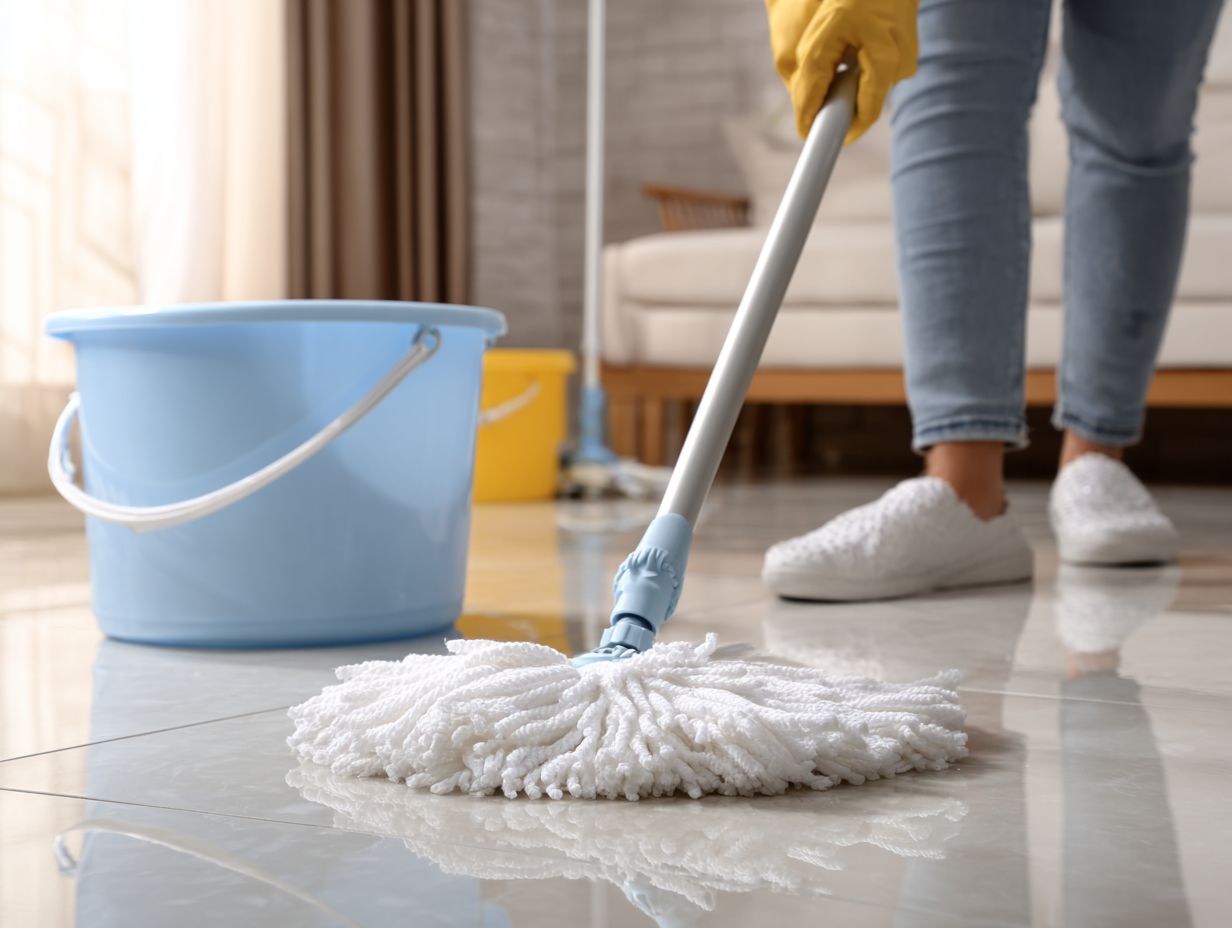
If your luxury vinyl floors are badly damaged or worn out, it might be the right moment to call in experts for repair services.
Signs that warrant professional intervention include deep scratches, discoloration, and warping.
For dependable repair, think about companies like Floor & Decor or The Home Depot, both known for their skill in vinyl flooring. Restoration costs typically range from $2 to $5 per square foot, depending on the extent of damage.
To prevent problems later, regularly clean the floors and use protective mats at entrances. Also, maintain proper humidity levels, as too much moisture can increase damage.
Long-Term Care for Vinyl Floors
Knowing how to care for luxury vinyl flooring over time helps homeowners keep it looking good and lasting longer.
Understanding Lifespan and Durability
Luxury vinyl flooring typically lasts between 10 to 20 years, depending on the quality and maintenance regimen.
Higher quality brands, such as Karndean and Shaw, tend to have longer lifespans, often reaching 20 years with proper care. Regular cleaning with vinyl-friendly products and minimizing foot traffic on the flooring can significantly extend its life.
For example, using a microfiber mop and a pH-neutral cleaner can help prevent scratches and damage. Placing rugs in high-traffic areas will safeguard these surfaces. Checking humidity levels is important; keeping them between 35% and 55% can stop warping and damage.
Signs It’s Time for Replacement
Recognizing the signs that your luxury vinyl flooring needs replacement can save you from further damage and costs.
Look for indicators like extensive scuffs, deep tears, or noticeable warping edges. If your flooring is losing its adhesive grip, causing planks to separate, it’s time to consider a replacement.
If you notice water damage or stains that persist despite cleaning efforts, consult a flooring expert for a professional assessment. They can offer choices suited to your specific needs, whether it’s fixing something or selecting new materials for your area.
Regular maintenance checks can prevent significant issues and extend the life of your flooring.
Frequently Asked Questions
1. How often should I clean my vinyl floors to keep them looking new?
To maintain the appearance of your vinyl floors, it is recommended to clean them once a week. This will help remove any dirt, dust, and other debris that can cause your floors to look dull or damaged over time.
2. Can I use a steam mop to clean my vinyl floors?
No, it is not recommended to use a steam mop on vinyl floors. The heat and moisture from the steam can cause damage to the vinyl, including warping and discoloration. It is best to use a damp mop and gentle cleaning solution.
3. How do I prevent scratches on my vinyl floors?
To prevent scratches, it is important to use furniture pads or felt pads on the legs of any furniture that will be placed on the vinyl floors. Do not move heavy furniture or sharp items across the floors. Regular sweeping or vacuuming can also help remove any small debris that can cause scratches.
4. Can I use bleach or harsh chemicals to clean my vinyl floors?
No, it is not recommended to use bleach or other harsh chemicals on vinyl floors. These products can cause discoloration and damage to the vinyl. It is best to use a gentle cleaner specifically designed for vinyl floors.
5. How do I remove stains from my vinyl floors?
For tough stains, it is best to use a specialized vinyl floor cleaner and follow the instructions on the product. You can also try using a mixture of warm water and mild dish soap to gently scrub the stain. Avoid using abrasive cleaners or tools that can scratch the surface of the vinyl.
6. Is it necessary to wax my vinyl floors?
No, most modern vinyl floors do not require waxing. In fact, wax can actually cause damage and make your floors look dull. Instead, it is important to regularly clean and maintain your vinyl floors to keep them looking new.
